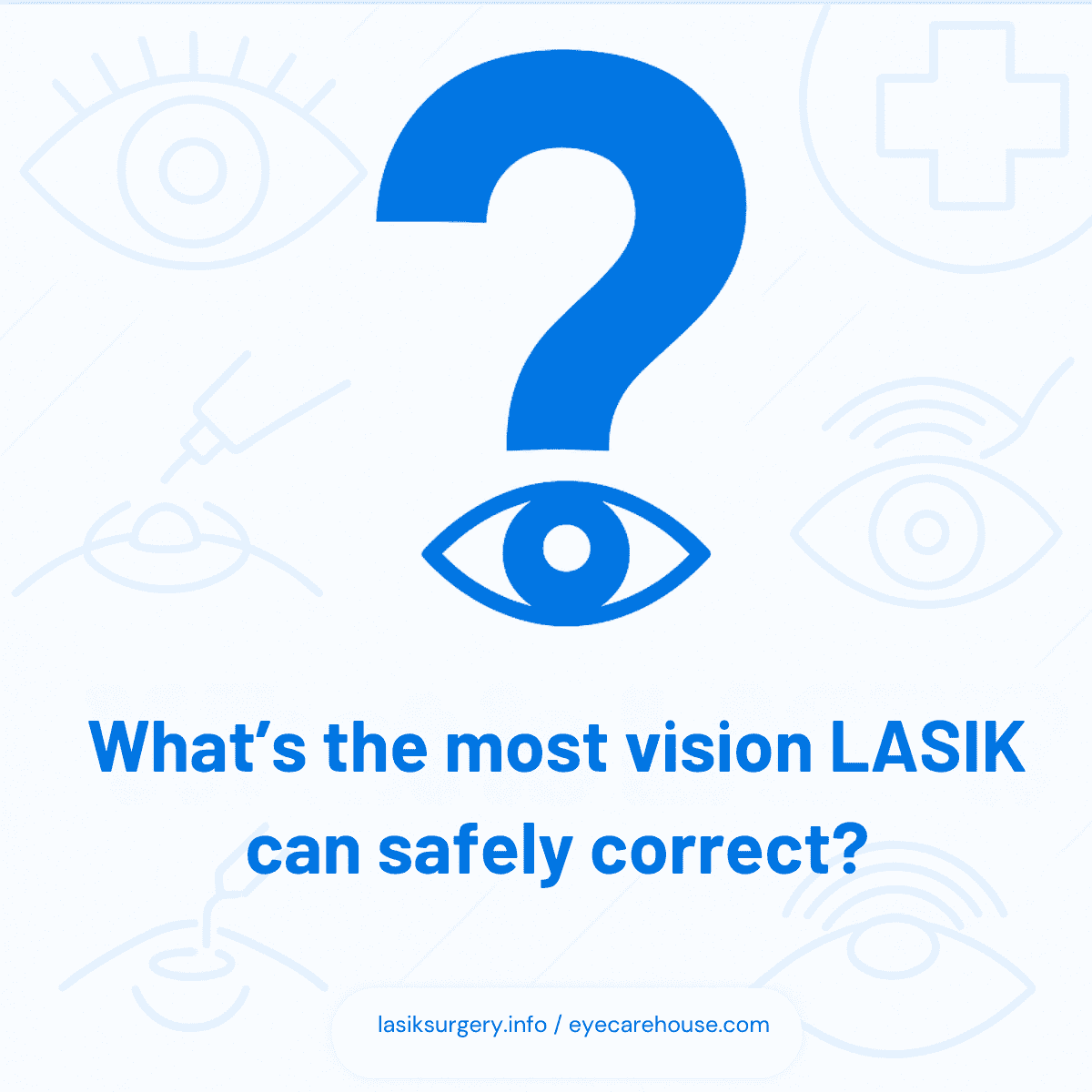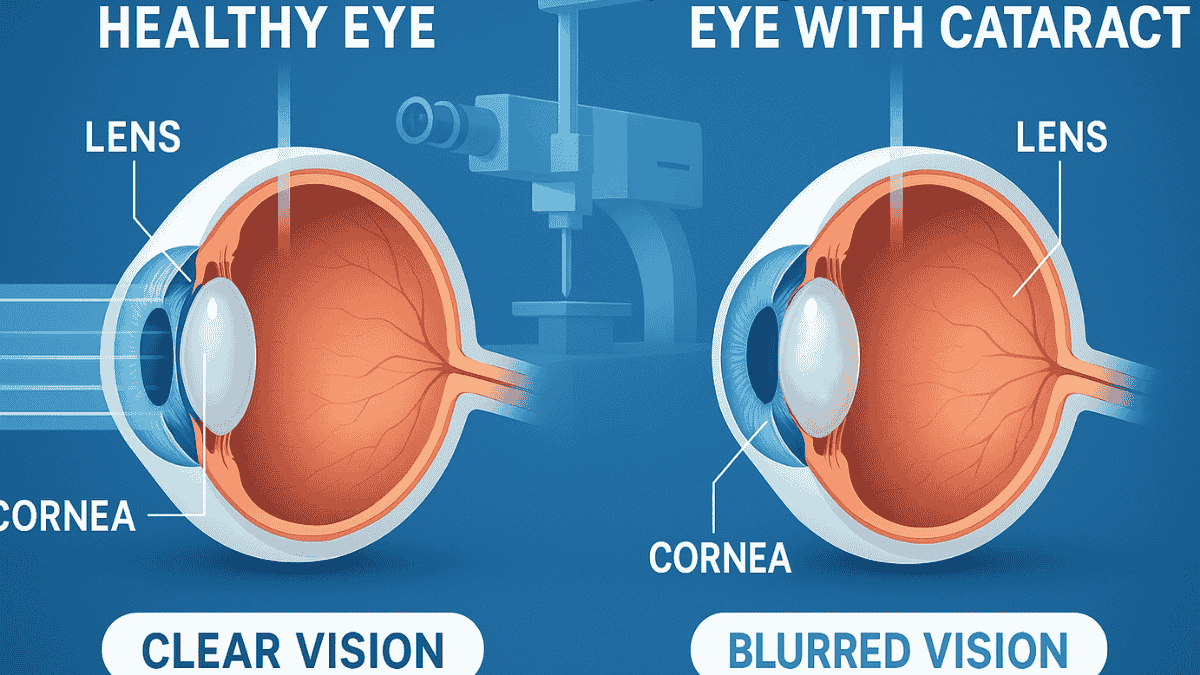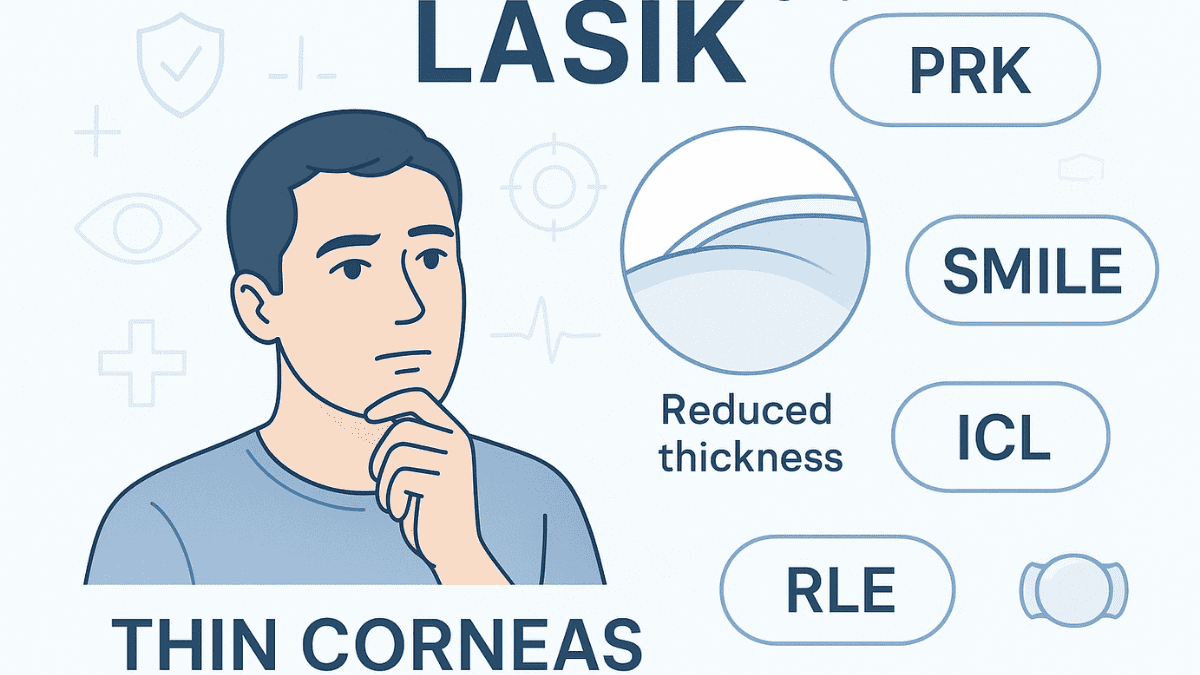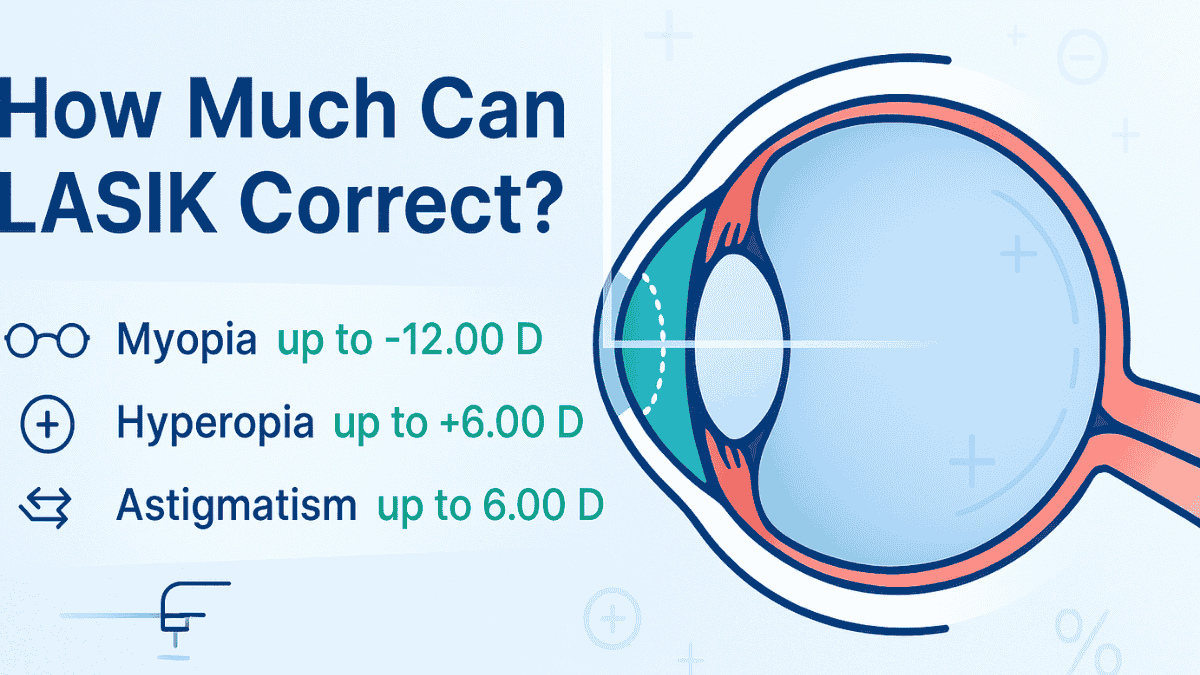
You’re probably tired of glasses slipping down your nose or the daily ritual of contact lenses. Maybe you’ve heard about LASIK eye surgery. You wonder, how much can LASIK correct for someone like me? It’s a big question, especially if you have a stronger vision prescription and are seeking clear vision without wearing glasses.
Many people believe their eyesight is just “too bad” for laser vision correction or any refractive laser surgery. This isn’t always true; even high prescriptions can sometimes be addressed. While there are limits, LASIK technology has advanced significantly, expanding the range of vision issues it can manage.
This article will help you understand those limits for vision correction, what they mean for your eye health, and what factors go into determining LASIK suitability. Understanding how much can LASIK correct is the first step in seeing if this popular eye surgery is right for you and your vision problems.
Table of Contents
Understanding Your Vision Prescription
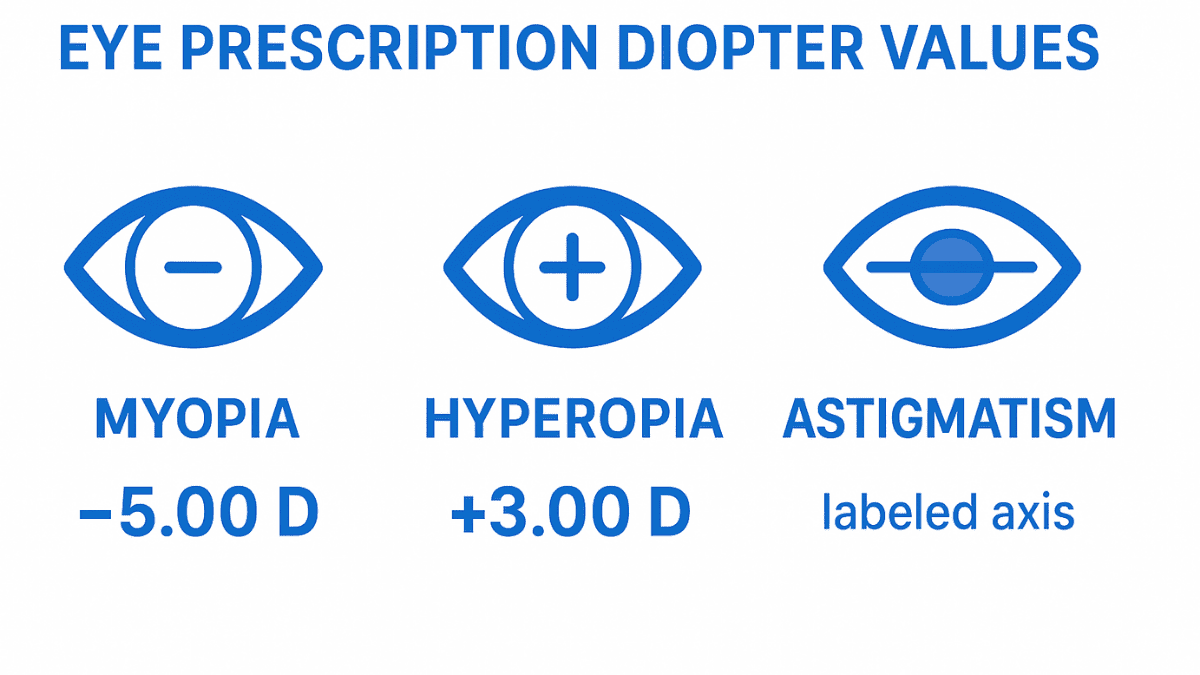
Before we discuss correction ranges, let’s quickly go over what those numbers on your prescription mean. Your eye doctor uses a unit called a “diopter” (D) to measure the refractive error, which is the focusing power your eyes need for light entering the eye to focus correctly on the retina. This number tells you how much correction your vision needs to achieve clear vision.
If you see a minus sign (-) before the number, like -5.00 D, you have myopia. This means you are nearsighted and can see close objects clearly, but distant objects are blurry. A higher number, such as in cases of extreme nearsightedness, indicates a stronger vision prescription and a greater degree of nearsightedness that needs laser eye surgery.
A plus sign (+), like +3.00 D, indicates hyperopia. This is farsightedness, where distant objects might be clear, but close-up tasks can be blurry or cause strain. Sometimes, young people with mild hyperopia don’t notice it because their eyes can compensate, but eventually, vision correction might be desired for improved eye care.
You might also see numbers for astigmatism, often measured in diopters astigmatism. Astigmatism happens when your cornea, the clear front part of your eye, is shaped more like a football than a basketball, leading to an irregular cornea condition. This causes blurry or distorted vision at all distances and can significantly impact your quality of life. It often occurs along with nearsightedness or hyperopia, making comprehensive eye assessment crucial.
Related Article
What is Myopia?Related Article
What is Farsightedness?Related Article
What is Astigmatism?General LASIK Correction Ranges: What Are We Talking About?
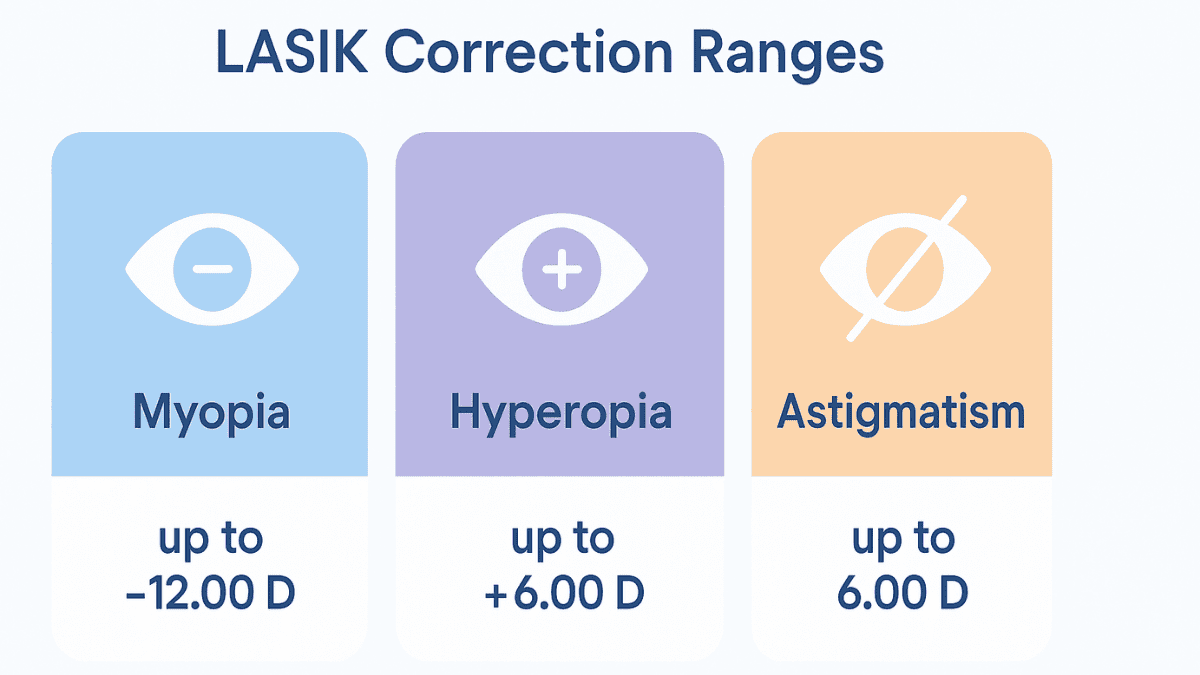
So, let’s get to the main point: what are the typical LASIK prescription limits? It’s important to remember that these are general guidelines for laser eye surgery. Your specific eligibility for LASIK surgery depends on many factors beyond just your prescription numbers, including your overall eye health.
Many eye surgeons use FDA guidelines and their own clinical experience to determine who is a good candidate and a suitable candidate. For instance, the FDA provides information on approved lasers, which have specific ranges they are cleared to treat; this information is often medically reviewed. This is a great starting point when considering if laser surgery can help your vision problems.
Generally, the better the technology used for the laser eye surgery and the more experienced the eye surgeon, the broader the range of prescriptions that might be treatable. However, safety is always the top priority, and achieving safe LASIK outcomes is paramount. The upper limit for correction is carefully considered for each patient.
How Much Can LASIK Correct for Myopia (Nearsightedness)?
For nearsightedness, LASIK can often correct quite high prescriptions. Many surgeons are comfortable using laser eye surgery to treat up to -10.00 D or even -12.00 D of myopia. This covers a large majority of people who wear glasses or contact lenses for distance vision and want to treat nearsightedness.
Why the limit for this eye surgery? Very high myopia often means a lot of corneal tissue needs to be reshaped. If the cornea is too thin to begin with, or if removing too much tissue would compromise its structural integrity or corneal thickness, LASIK might not be the safest choice. Your eye surgeon will take precise measurements of your corneal thickness to decide this.
Other factors, like large pupils, can also influence the maximum myopia treatable with good visual quality. Large pupils, especially in dim light, combined with high corrections can sometimes lead to night vision issues like glare or halos. These are important requirements for LASIK to consider to ensure a successful vision LASIK outcome.
How Much Can LASIK Correct for Hyperopia (Farsightedness)?
Correcting farsightedness with LASIK can be a bit more complex than addressing nearsightedness. The typical LASIK prescription limits for hyperopia are generally lower. Most eye surgeons will treat up to +4.00 D, and some may go up to +5.00 D or occasionally +6.00 D with modern refractive laser technology.
The way LASIK involves correcting hyperopia involves steepening the central cornea, rather than flattening it as in myopia. This can be less predictable at very high levels of farsightedness. Also, older individuals with hyperopia might also be experiencing presbyopia (age-related farsightedness or difficulty with near vision), which LASIK for distance doesn’t directly fix, although monovision strategies can be a good option for some.
The quality of vision after hyperopic LASIK, especially for higher prescriptions, is a key consideration for surgeons. They want to make sure you’ll be happy with the outcome of the surgery treatment. Your individual eye anatomy and the thickness cornea plays a big role here in determining LASIK suitability.
LASIK for Astigmatism Limits
Astigmatism can also be effectively treated with LASIK eye surgery. The LASIK for astigmatism limits typically go up to about 5.00 D or 6.00 D of diopters astigmatism. Most people with astigmatism fall well within this range, making them potentially good candidates.
During LASIK for astigmatism, the laser reshapes the cornea to make it more spherical, like a basketball. This allows light entering the eye to focus correctly on the retina. Modern lasers are very precise in correcting the irregular corneal shape causing astigmatism, offering a path to clear vision.
It’s common for astigmatism to exist alongside myopia or hyperopia; these are common refractive errors. LASIK can usually correct both issues at the same time during a single laser surgery. The laser system will be programmed with your full vision prescription to address all these refractive errors simultaneously for comprehensive vision correction.
Related Article
Eye Laser Surgery for AstigmatismHow Much Can LASIK Correct: It’s Not Just About the Numbers
While your vision prescription is a major factor, it’s not the only thing that determines if you’re a good candidate for LASIK. Can your vision be too bad for LASIK based on other things? Yes, other medical eligibility factors are very important for determining LASIK candidacy and ensuring LASIK safe outcomes.
Your eye doctor will perform a comprehensive eye exam. This checks many aspects of your eye health. Here are some key things they look at:
- Corneal Thickness: This is critical. LASIK reshapes your cornea by removing a tiny amount of tissue. If your corneas are naturally thin, or if your prescription is very high (requiring more tissue removal), there might not be enough corneal tissue to safely perform lasik or other laser eye procedures. Insufficient corneal thickness, or thickness cornea, is a common reason why someone might not be a good candidate for LASIK, even if their prescription is within general ranges. This factor significantly influences the upper limit of correction.
- Corneal Shape and Health: You must have healthy corneas. Conditions like keratoconus (a progressive thinning and bulging of the cornea, a specific cornea condition) are absolute contraindications for LASIK. The eye surgeon will use special mapping technology, called topography, to check for any irregularities in your cornea’s shape before they perform lasik.
- Stable Vision: Your glasses or contact lens prescription should be a stable prescription for at least a year before LASIK. If your vision is still changing, the results of LASIK won’t last as long. This is why LASIK eye surgery is generally not recommended for people under 18 or those whose vision prescription is actively progressing.
- Overall Eye Health: You should be free of significant eye diseases that could affect healing or outcomes. This includes conditions like severe dry eye syndrome, glaucoma, unmanaged macular degeneration, or active eye infections. Some controlled eye conditions might be acceptable, but it’s a case-by-case decision made by your eye care professional. A family history of certain eye diseases might also be relevant.
- General Health: Certain systemic health conditions can affect healing. Uncontrolled diabetes or autoimmune diseases like lupus or rheumatoid arthritis can sometimes make LASIK riskier. You’ll need to discuss your full medical history, including any health conditions, with your eye surgeon.
- Pupil Size: As mentioned earlier, very large pupils, especially in dim light, can sometimes increase the risk of night vision problems like glare or halos after LASIK. This is particularly true for higher prescriptions.
- Realistic Expectations: It’s important to understand what LASIK can and cannot do. The goal is usually to greatly reduce your dependence on glasses or contact lenses. Perfect 20/20 vision is a common outcome but not always guaranteed for everyone, especially with high prescriptions.
A history of dry eyes or issues with wearing contact lenses might make you eager for LASIK, but pre-existing dry eye syndrome needs careful evaluation. Your eye surgeon will assess if it can be managed adequately for a successful surgery treatment.
What If Your Prescription Is Too High for LASIK? Alternatives Exist.
So, what happens if you find out your prescription for LASIK is indeed too high, or if other factors rule it out? Don’t lose hope for freedom from wearing glasses. There are excellent LASIK alternative procedures available that might be perfect for you. These procedures can often handle even very high prescriptions or address other contraindications to LASIK, such as an unsuitable cornea condition.
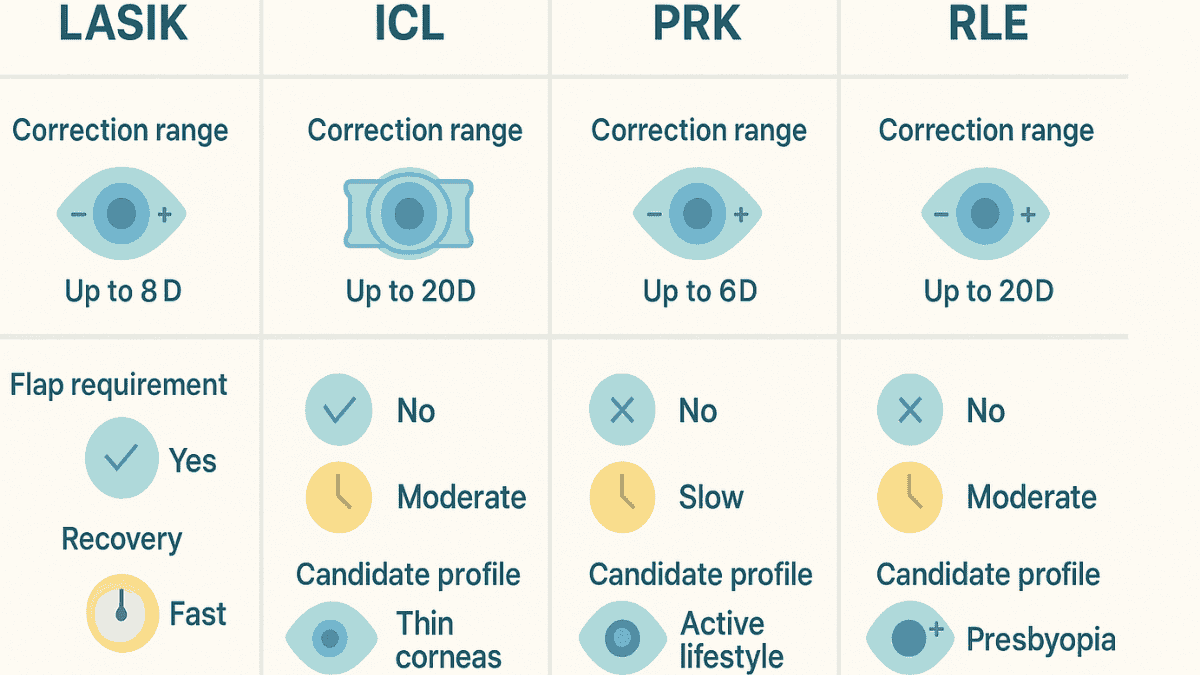
Related Article
Safe LASIK AlternativesICL (Implantable Collamer Lens)
ICL surgery, sometimes called an implantable lens or phakic intraocular lens, is a fantastic option, especially for high myopia or extreme nearsightedness. Instead of reshaping your cornea with a refractive laser, a tiny, biocompatible lens is placed inside your eye, behind the iris and in front of your natural lens. This lens is made of a material called Collamer, which is similar to collagen and very compatible with the eye’s tissues.
ICLs can often correct nearsightedness up to -20.00 D or even higher, with or without significant astigmatism. The procedure is reversible, meaning the implantable lens can be removed if needed, offering flexibility. Many patients report very sharp, clear vision with ICLs, often with great night vision quality, making it a compelling LASIK alternative for a suitable candidate with high prescriptions.
This lens surgery does not involve creating a corneal flap, which can be an advantage for individuals with thin corneas or pre-existing dry eyes. The recovery is also typically quite fast. An ICL is often a good option when determining LASIK unsuitability due to prescription strength or corneal parameters.
Related Article
ICL vs LASIK: Which is Better?RLE (Refractive Lens Exchange)
Refractive Lens Exchange (RLE) is essentially the same procedure as modern cataract surgery. Your eye’s natural lens is removed and replaced with an artificial intraocular lens (IOL) that has your corrective prescription built into it. This lens surgery is often a great choice for people with very high hyperopia or myopia that’s beyond the laser eye surgery prescription limits for LASIK.
RLE is also a good option for individuals over 40 or 50 who are starting to experience presbyopia (the need for reading glasses or age-related farsightedness). Advanced IOLs used in refractive lens exchange can even correct presbyopia, giving you clear vision at distance, intermediate, and near. Different types of refractive lens options are available, including monofocal, multifocal, and toric lenses to correct astigmatism.
A huge benefit of RLE, also known as lens exchange, is that you will never develop cataracts later in life because your natural lens has been replaced. This makes it a permanent solution for vision correction and future cataract prevention. It is a more invasive surgery treatment than laser vision correction but offers significant benefits for the right patient.
PRK (Photorefractive Keratectomy)
Photorefractive keratectomy (PRK) is another type of laser vision correction, actually older than LASIK. The main difference is that with PRK, no corneal flap is created in the cornea. Instead, the eye surgeon gently removes the cornea’s outermost layer (the epithelium), and then the excimer laser (the same type used in LASIK) reshapes the underlying corneal tissue.
PRK can treat similar ranges of myopia, hyperopia, and astigmatism as LASIK. It is sometimes preferred for people with thinner corneas who might not be ideal LASIK candidates or those with a specific cornea condition. It’s also favored for those in certain professions or with hobbies that carry a risk of eye trauma (like military personnel or boxers), as there’s no flap that could be dislodged. While there’s no cornea flap, the healing of the epithelial layer takes a few days.
The recovery for photorefractive keratectomy is typically a bit longer and involves more discomfort initially compared to LASIK, but the long-term visual outcomes are very similar. PRK is a valuable LASIK alternative when LASIK is not advisable. It’s a well-established form of laser surgery with a long track record.
Related Article
What to Know About PRK SurgerySMILE (Small Incision Lenticule Extraction)
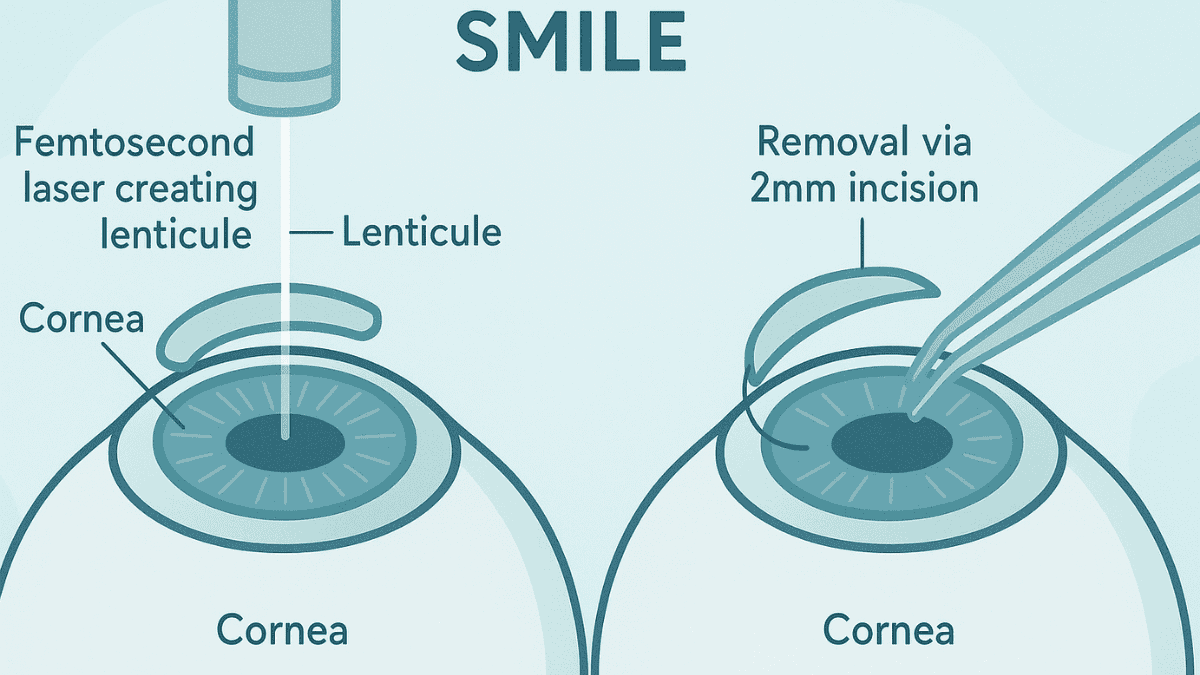
SMILE is a newer refractive laser surgery technique that is less invasive than LASIK. A femtosecond laser creates a small, lens-shaped piece of tissue (lenticule) within the cornea. The eye surgeon then removes this lenticule through a very small incision, changing the cornea’s shape to correct the refractive error.
SMILE is mainly used to correct myopia, typically from -1.00 D to -10.00 D, and some astigmatism (up to -5.00 D). It’s not yet widely used for hyperopia. Because it involves a smaller incision and no corneal flap, some believe it may lead to less incidence of dry eyes and better corneal stability compared to LASIK, though more long-term research is ongoing.
The laser eye surgery prescription limits for SMILE are specific, and your surgeon can tell you if it’s an option. It offers another avenue for vision correction, particularly for those who may not be suitable for traditional LASIK surgery. Determining LASIK or SMILE suitability involves a thorough eye examination.
Related Article
SMILE Laser Eye Surgery OverviewComparing Vision Correction Procedures

Understanding the differences between these vision correction options can help you have a more informed discussion with your eye doctor. Each surgery treatment has its own set of advantages, considerations, and typical patient profiles. Here’s a table summarizing the key aspects:
| Procedure | Mechanism | Typical Correction Range (General) | Corneal Flap | Key Advantages | Primary Considerations |
|---|---|---|---|---|---|
| LASIK (Laser-Assisted In Situ Keratomileusis) | Excimer laser reshapes cornea under a flap. | Myopia: up to -12.00 D; Hyperopia: up to +6.00 D; Astigmatism: up to 6.00 D | Yes | Fast visual recovery; wide range of correction for many refractive errors. | Requires sufficient corneal thickness; flap-related complications (rare); potential for dry eye. |
| PRK (Photorefractive Keratectomy) | Excimer laser reshapes cornea surface after epithelium removal. | Similar to LASIK; Myopia: up to -12.00 D; Hyperopia: up to +6.00 D; Astigmatism: up to 6.00 D | No | Good for thinner corneas; no flap risks; suitable for those with active lifestyles. | Longer initial recovery; more discomfort initially. |
| SMILE (Small Incision Lenticule Extraction) | Femtosecond laser creates and removes a lenticule from within the cornea. | Myopia: -1.00 D to -10.00 D; Astigmatism: up to -5.00 D | No (minimal incision) | Less invasive; potentially less dry eye; good corneal stability. | Primarily for myopia and astigmatism; not for hyperopia yet; newer procedure. |
| ICL (Implantable Collamer Lens) | A biocompatible implantable lens is placed inside the eye. | Myopia: up to -20.00 D or higher; Astigmatism: can correct with toric ICLs. | No (small incision for lens insertion) | Excellent for high myopia; reversible; preserves cornea; good for dry eye patients. | More invasive than laser procedures; internal eye surgery risks (very low). |
| RLE (Refractive Lens Exchange) | Natural lens replaced with an artificial intraocular lens (IOL). | Can correct very high myopia, hyperopia, and astigmatism; treats presbyopia. | No (similar to cataract surgery incisions) | Treats high refractive errors & presbyopia; prevents future cataracts. This lens exchange is very effective. | More invasive; typically for those over 40-50; internal eye surgery risks (very low). A refractive lens is used. |
This table provides a general overview. Your eye surgeon will discuss which option, if any, is best suited for your specific vision prescription, eye health, and lifestyle needs after a comprehensive eye exam. They will consider all factors to help you make an informed decision about your eye care.
Why Do These LASIK Maximum Prescription Limits Even Exist?
You might wonder why there are limits at all. Why can’t LASIK, a type of laser eye surgery, just fix any vision prescription? The reasons come down to safety and the quality of your vision after the procedure. It’s not just about getting rid of glasses; it’s about ensuring good, stable, and comfortable clear vision for the long term, and maintaining good eye health.
One main concern is preserving the structural integrity of your cornea. Removing too much tissue during the laser surgery, or performing LASIK on an already weak or thin cornea, could lead to a rare but serious cornea condition called corneal ectasia. This is a progressive bulging and thinning of the cornea that can cause significant vision loss. Sticking to established prescription limits, understanding the thickness cornea, and carefully evaluating corneal health helps avoid this and ensure a safe LASIK outcome.
Also, predictability and the quality of vision can decrease with very high corrections using any refractive laser. Higher prescriptions might have a greater chance of side effects like glare, halos, or starbursts around lights, especially at night. The goal is to achieve clear vision without these trade-offs. The question of what vision prescription is too high for LASIK is carefully considered by eye surgeons to minimize these risks and avoid bad LASIK outcomes. This careful approach underpins responsible refractive surgery.
The creation of a corneal flap during LASIK eye surgery is another factor. The flap itself requires a certain amount of corneal thickness, and the reshaping occurs beneath it. If the cornea is too thin, creating a stable flap and then removing additional tissue for correction might not be possible without compromising the eye’s structural integrity. This is why precise measurements of corneal thickness are so vital.
Finding Out Your Specific Candidacy for LASIK
The best way to know how much LASIK can correct for your specific eyes is to have a full evaluation with an experienced LASIK surgeon or eye doctor. They will take precise measurements of your eyes, review your medical history (including any family history of eye diseases), and discuss your lifestyle needs. Only then can you get a definitive answer on whether you are a good candidate for this laser surgery.
Don’t be discouraged if one clinic tells you your vision prescription is too high for the LASIK eye procedure. Technology and surgeon experience vary. It’s always wise to get a second opinion, especially if your vision prescription is borderline or if you have high prescriptions. But always prioritize eye surgeons who are honest about the risks and limitations; they will explain if the laser eye surgery prescription limits for their equipment and expertise mean a LASIK alternative is better for you.
They’ll help you understand if LASIK surgery, or perhaps one of the alternatives like ICL, photorefractive keratectomy, or RLE (refractive lens exchange), is the best path for you to achieve clearer vision. Your individual eye structure and health, including your corneal health and the stability of your prescription, are key. So, a personalized consultation for determining LASIK suitability is essential before you perform LASIK or any other eye surgery treatment.
Conclusion
Figuring out how much can LASIK correct is a key part of your journey to better vision and improved eye health. While there are general LASIK prescription limits for myopia, hyperopia, and astigmatism, many people with what they consider “bad vision” or high prescriptions are still good candidates. If your vision prescription does fall outside the optimal range for LASIK eye surgery, or if factors like corneal thickness or dry eyes make it less suitable, remember that advanced alternatives like ICL, PRK, or refractive lens exchange might offer you fantastic results.
The goal is to achieve lasting clear vision and reduce dependence on wearing glasses or contact lenses. The most important step is a thorough consultation with a qualified eye surgeon. They will perform a comprehensive eye exam to determine the safest and most effective way to address your specific needs for how much can LASIK correct in your situation, considering your unique eye conditions and overall health health (general health). Ultimately, finding a skilled eye care professional will guide you toward the best vision correction solution.
LASIK can typically correct myopia up to -10.00 to -12.00 diopters. The exact amount depends on corneal thickness and overall eye health, which your surgeon will evaluate before treatment.
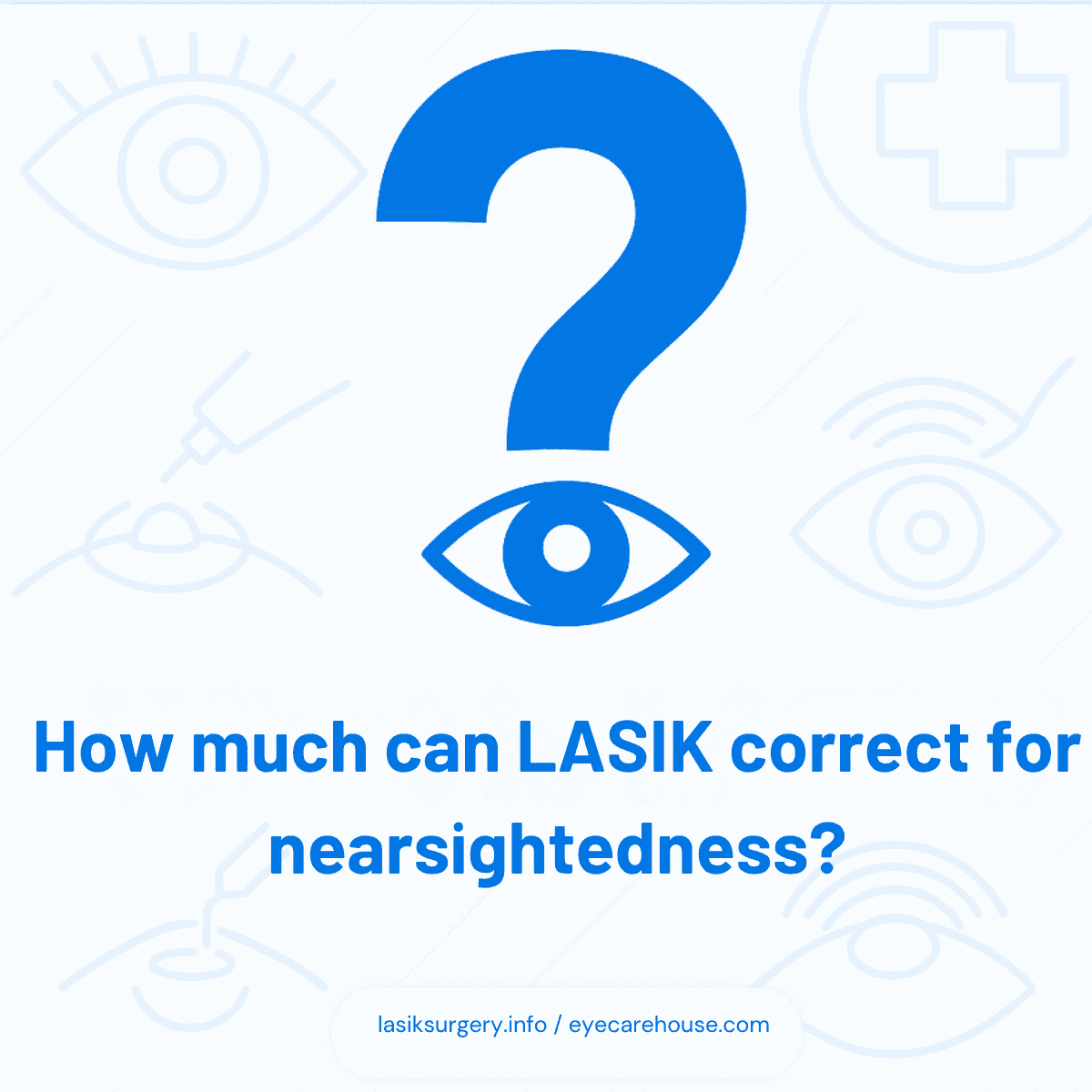
LASIK can generally treat hyperopia up to +4.00 D, and in some cases up to +6.00 D. Higher levels may be less predictable and are evaluated carefully.
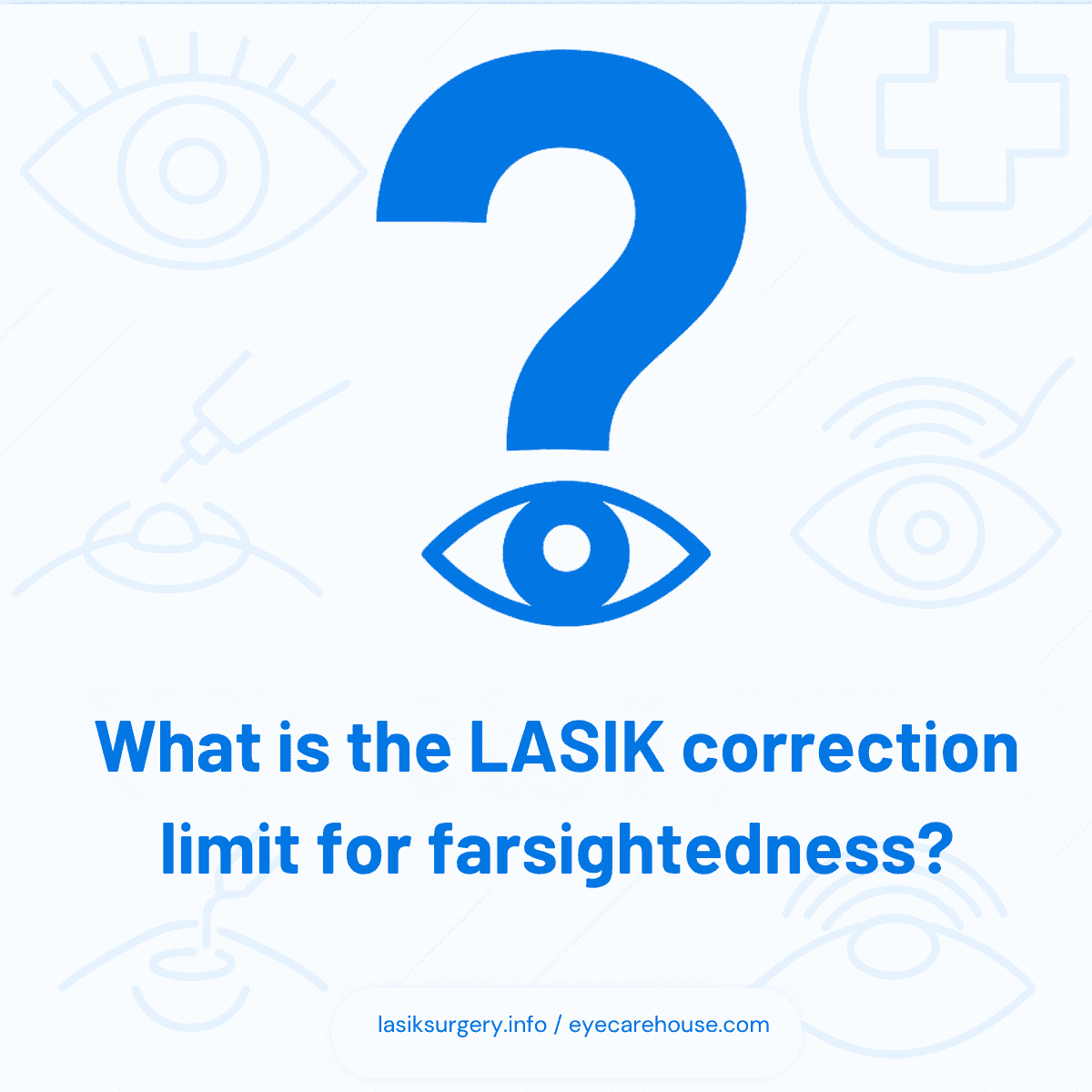
Yes, LASIK can treat astigmatism up to around 5.00 to 6.00 diopters. The laser reshapes the cornea to a more regular curve to improve overall visual clarity.
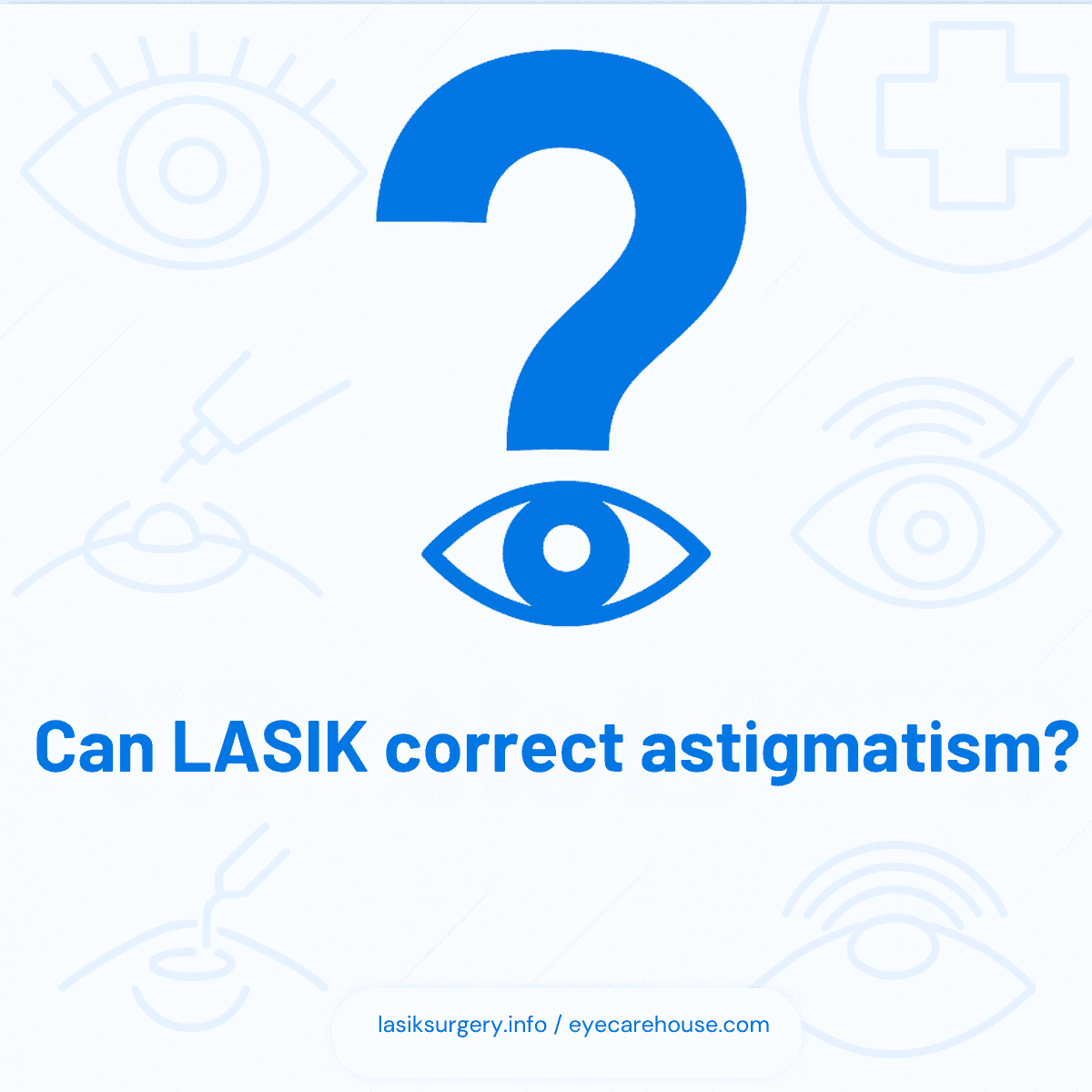
Yes, extremely high prescriptions may exceed LASIK’s safe limits. Patients with myopia beyond -12.00 D or with thin corneas may need alternative procedures like ICL or RLE.
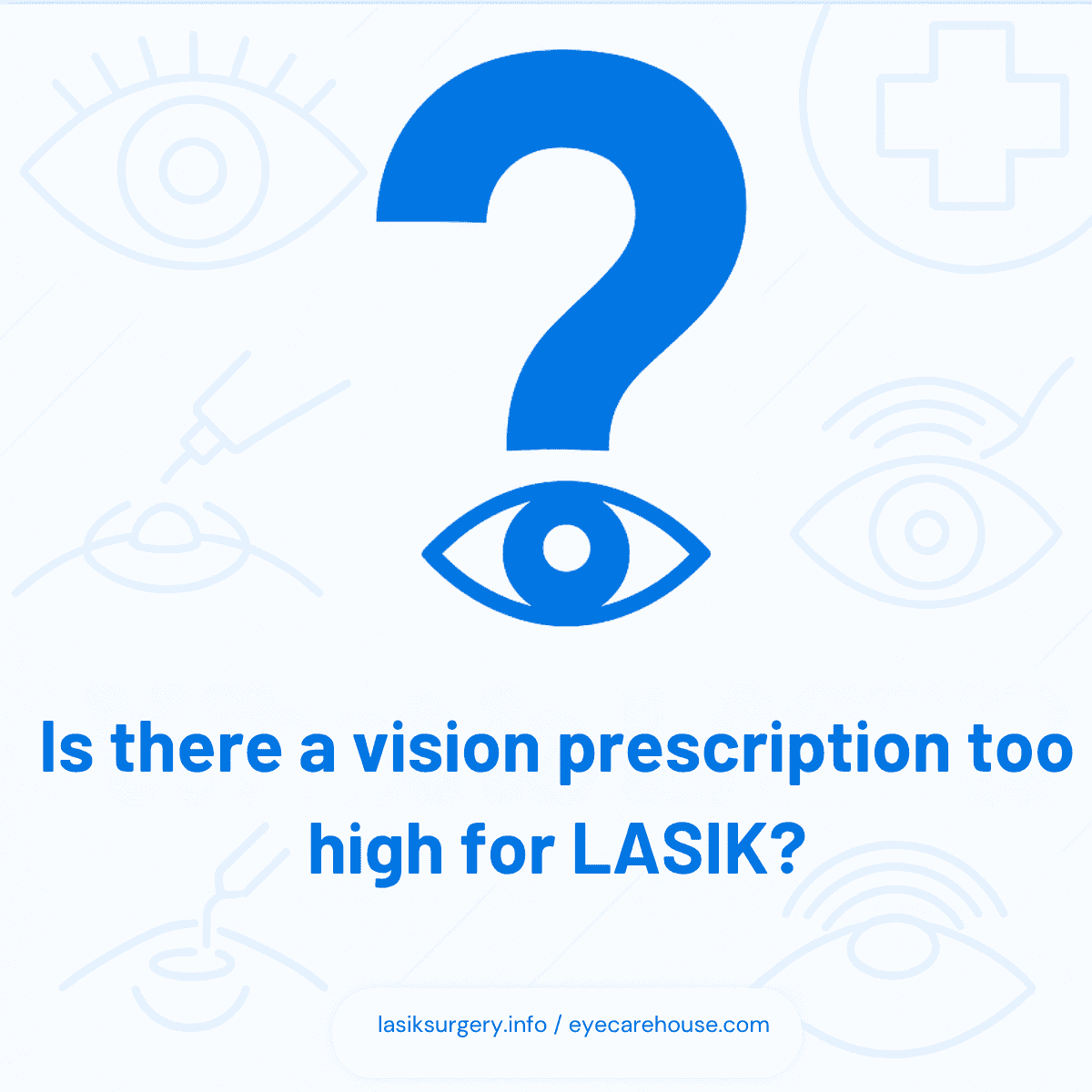
Alternatives include ICL (Implantable Collamer Lens), RLE (Refractive Lens Exchange), PRK, and SMILE. These options offer solutions for high prescriptions or unique eye conditions.
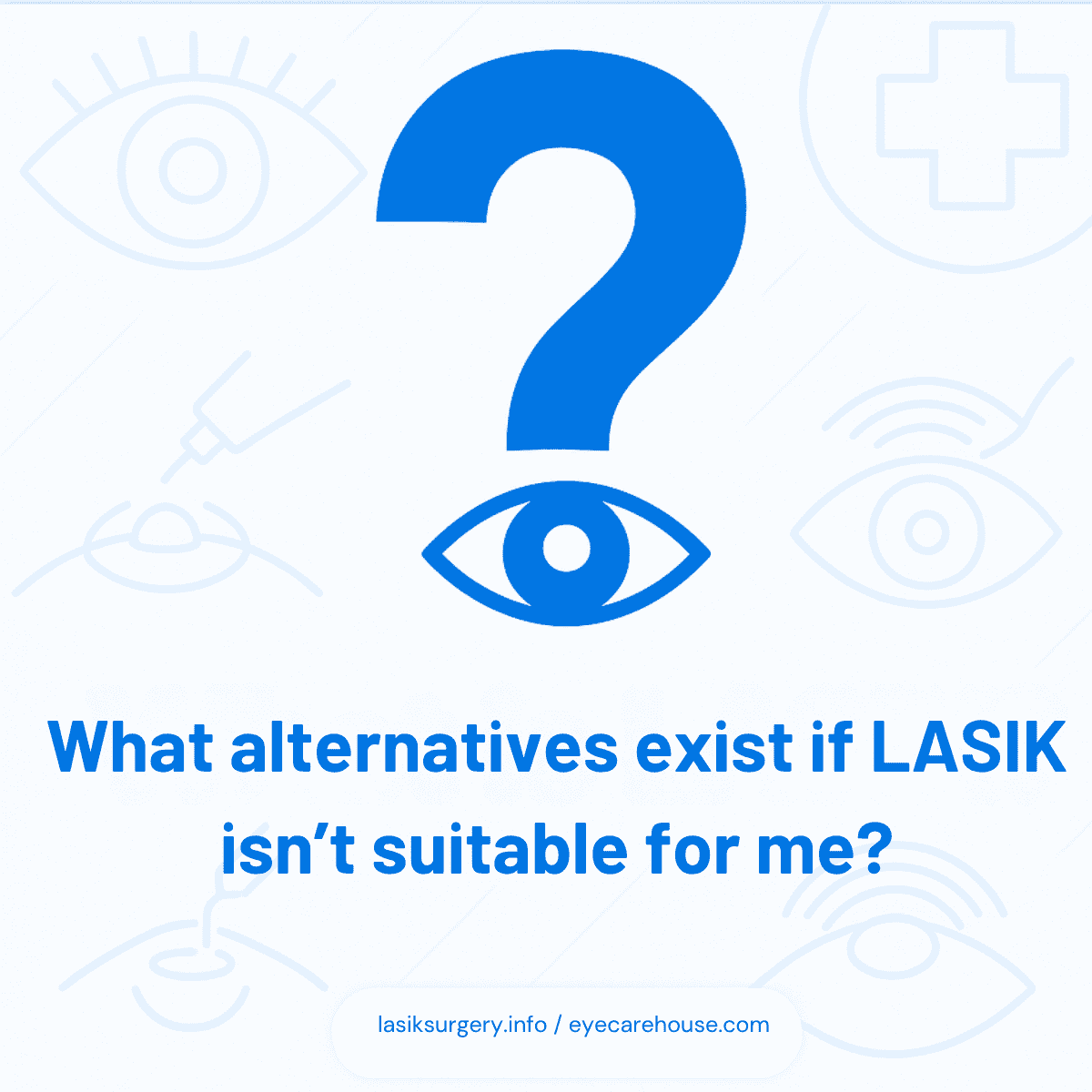
LASIK reshapes the cornea, so adequate thickness is required to maintain corneal stability after tissue is removed. Thin corneas might disqualify a patient from LASIK.
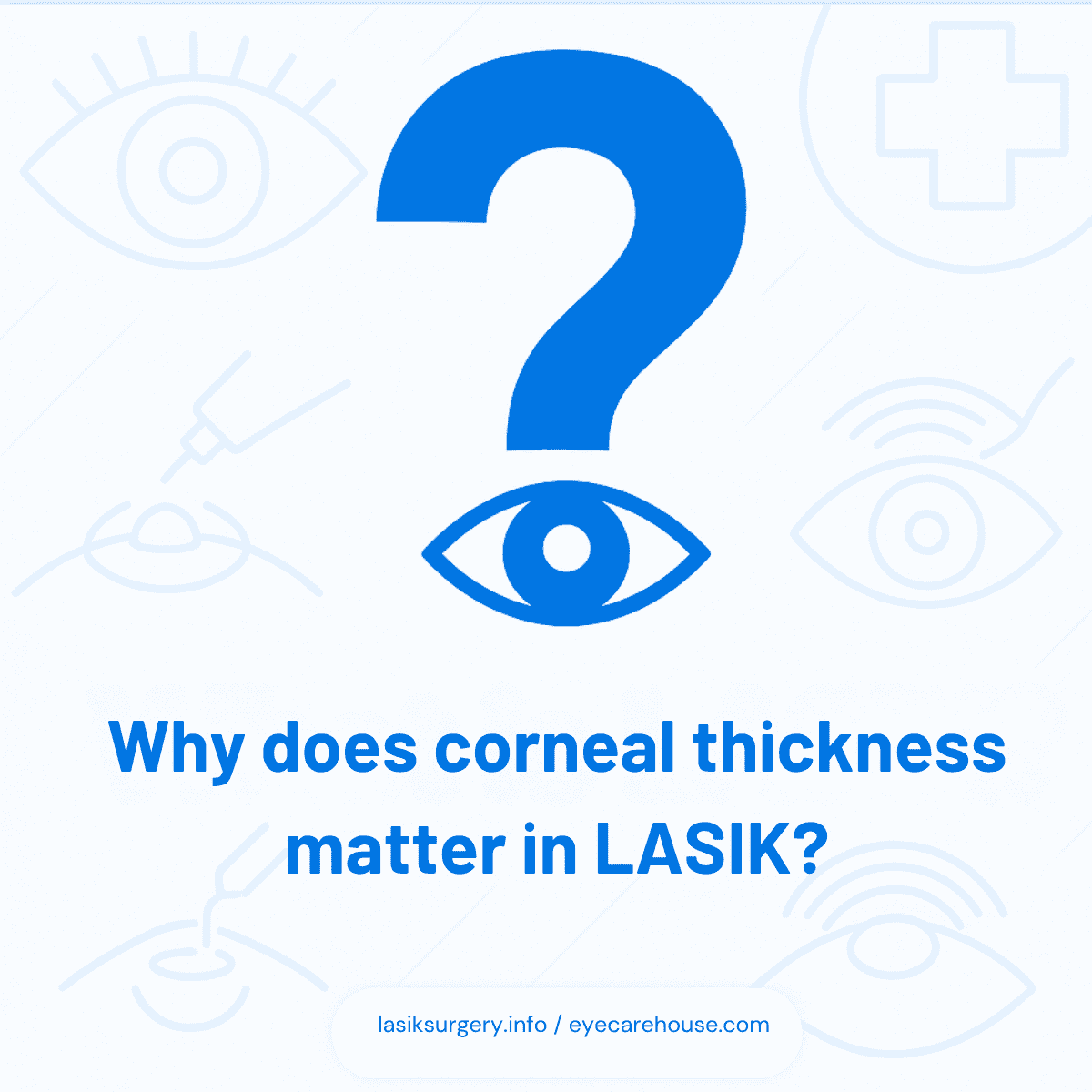
A comprehensive eye exam will evaluate your prescription stability, corneal thickness, pupil size, and overall eye health. Your surgeon will determine if LASIK is safe and effective for you.
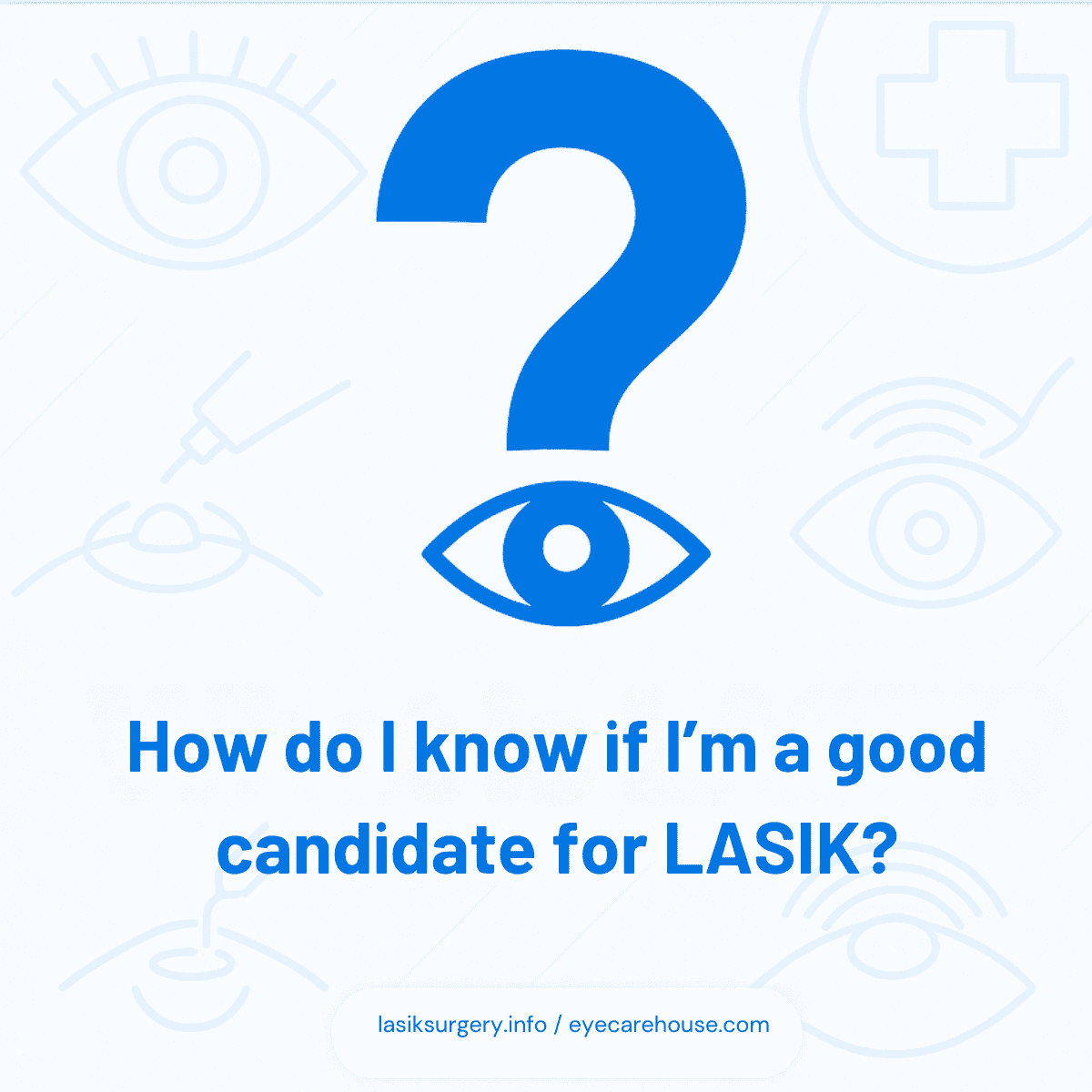
No. LASIK for hyperopia steepens the cornea, while for myopia it flattens it. Treating hyperopia is generally more complex and less predictable at higher levels.
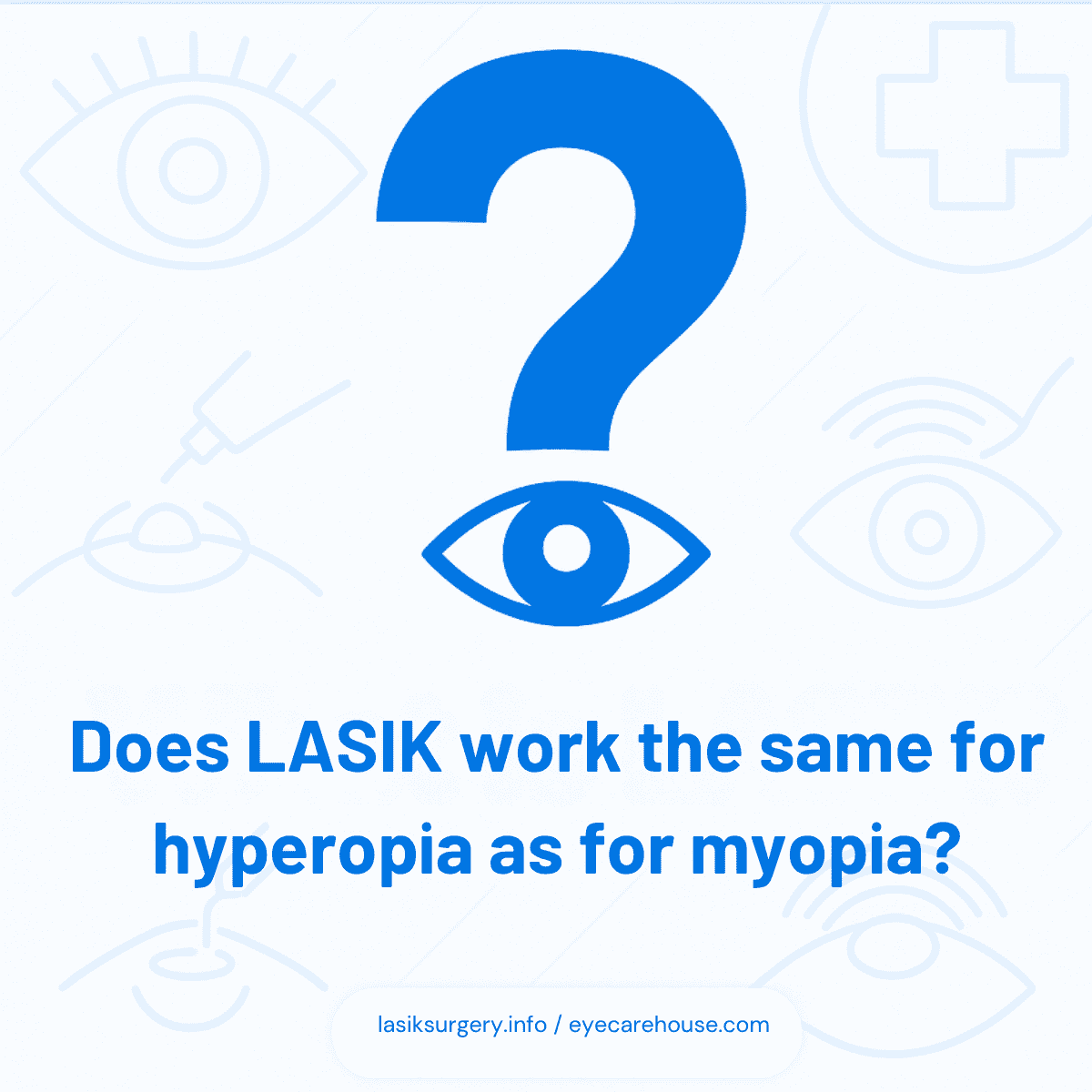
Yes. LASIK can simultaneously treat astigmatism alongside myopia or hyperopia. The procedure is customized to correct multiple refractive errors during a single session.

In general, LASIK can correct up to -12.00 D for myopia, +6.00 D for hyperopia, and 6.00 D for astigmatism. Beyond these, alternatives are considered for safety and visual quality.
